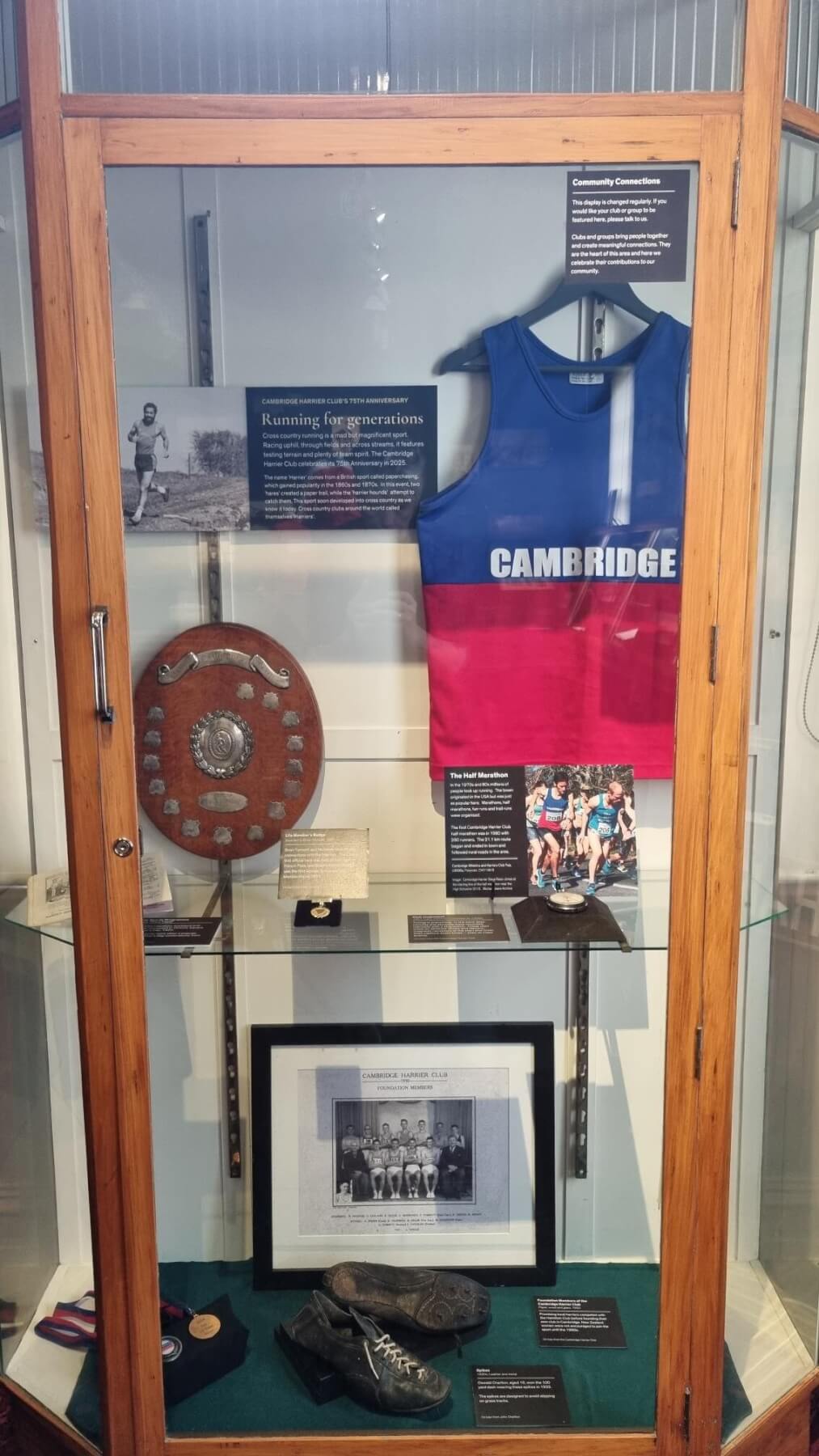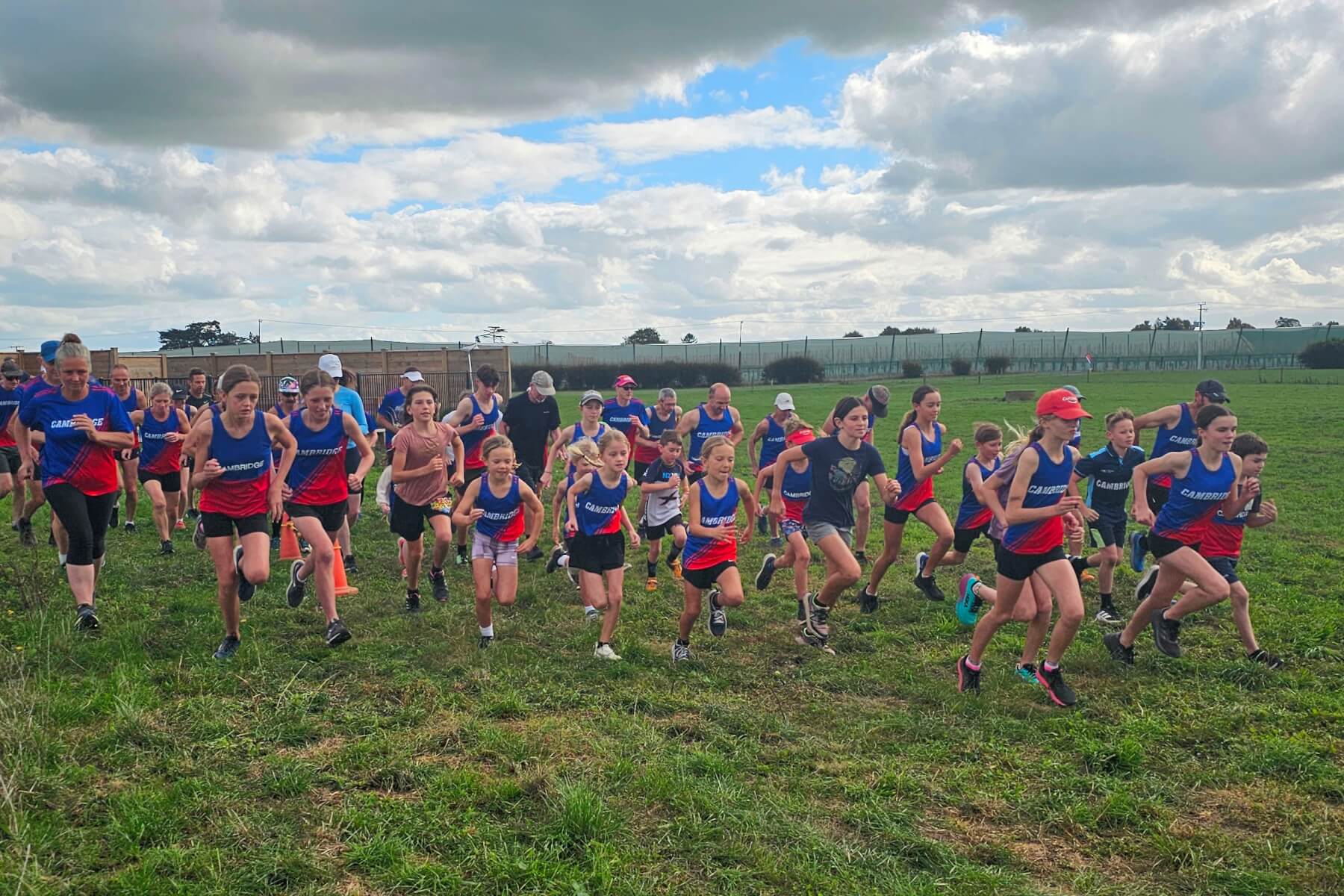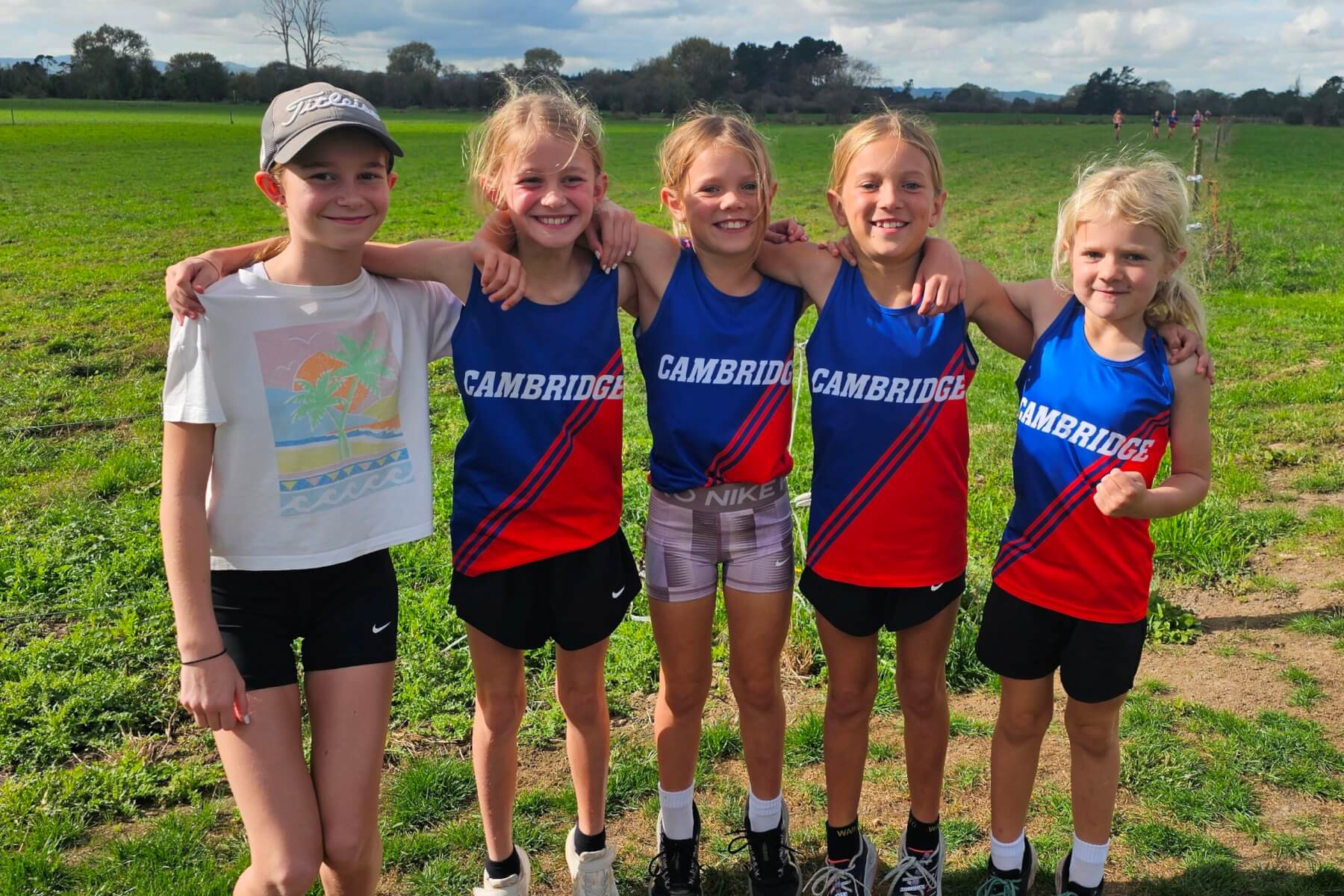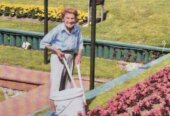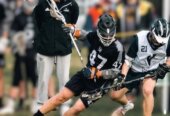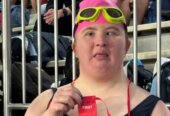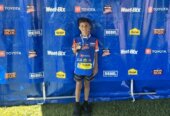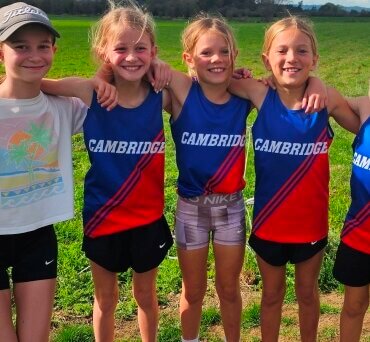
Nine-year-old Lottie Bourke loves running. So does Fred Needham.
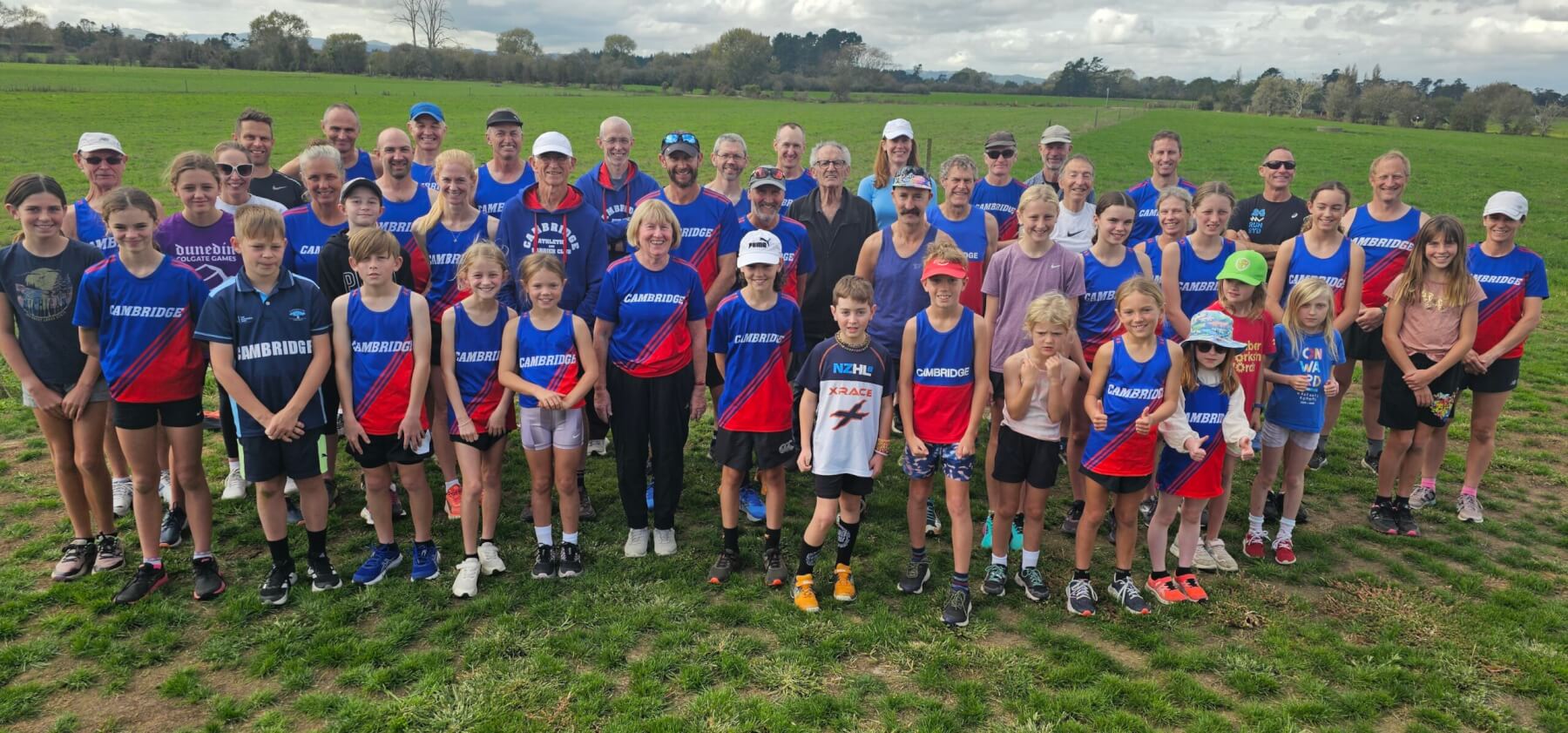
Cambridge Athletic and Harrier Club members before their run around Fishers’ farm in Ōhaupō on Saturday. At front in the middle is Margaret Fisher while behind her to the left is Fred Needham and to the right, president John Charlton. Photo: Mary Anne Gill.
There’s 67 years and at least three generations between them and that says Cambridge Harriers Jubilee committee member Margaret Fisher is what makes the Cambridge Athletic and Harrier Club so special.
The club is about to celebrate its 75th anniversary with a cross country relay next week from their grounds in Vogel St followed by a celebration dinner in the Roto-o-Rangi Community Hall.
The club’s first official race was held at Ern and Madge Tomsett’s property at Smart Rd, French Pass in 1950 with seven starters competing over a three mile country course.
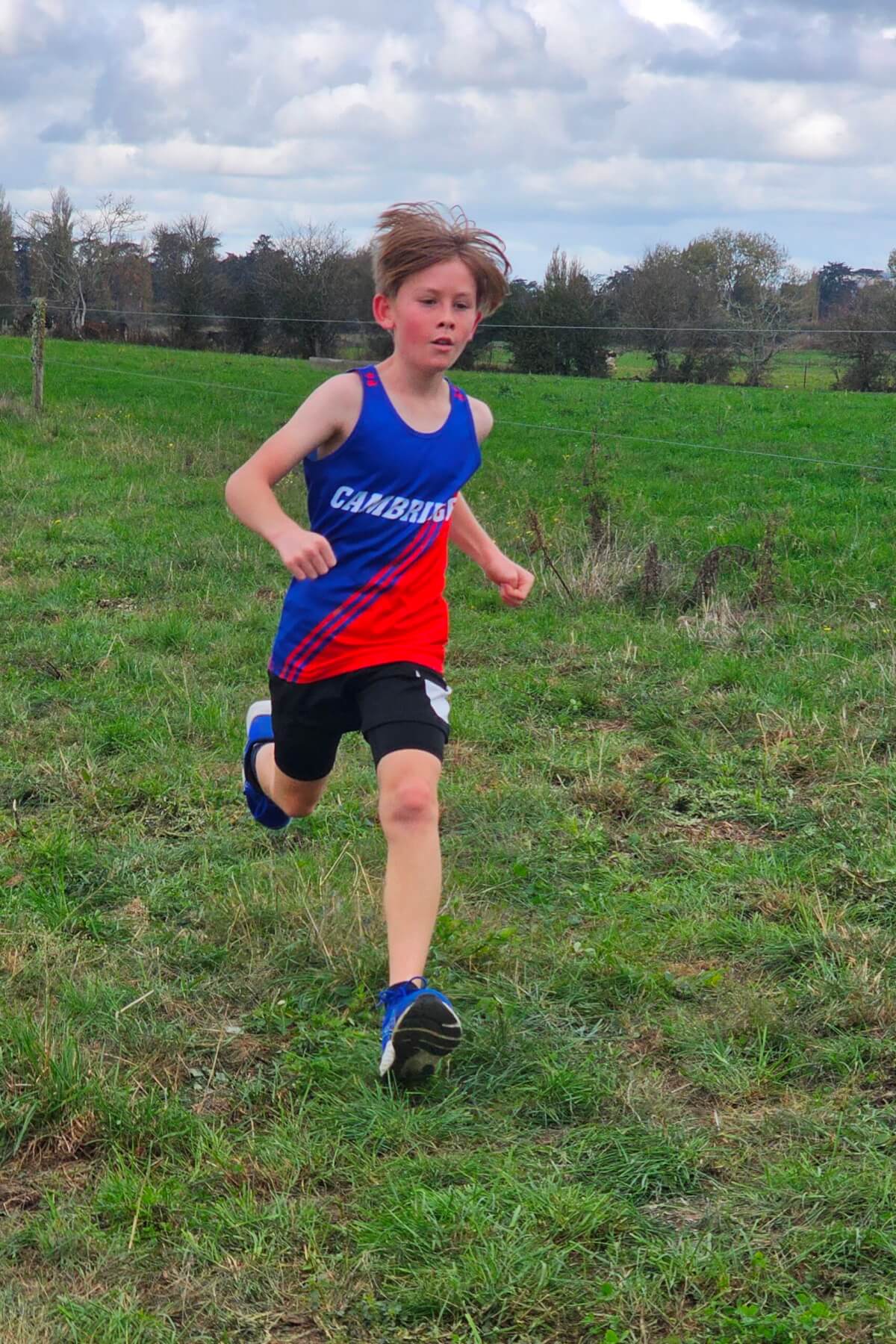
Benjamin Brown was first home in a stunning 9:26 for the two kilometre Cambridge Athletic and Harrier club run
Fast forward to 2025 and the course for the latest cross country event is on Fisher’s Ōhaupō dairy farm in Parallel Rd where more than 50 runners at the weekend encountered the same obstacles those hardy runners did back then. Cow manure, bogs, hedge fences and the odd puddle of water.
Distances varied dependent on running skillsets plus athletes were set an additional test – they were not allowed to wear watches to monitor their times. Instead, they were asked to estimate how long they thought the run would take them.
It was a test of their pacing ability, said Fisher.
First home in a scorching 9 minute 26s for the two kilometres was Benjamin Brown who looked as fresh as when he started. He also predicted his time to within four seconds. Rolf Bowsell went one second better – finishing his 7.6kms in 44.13. Hard luck story was Veronica Maree who meant to write down 29:29, her actual time, but was in a rush to get into the club photo and sort the shirts and wrote down 19:29 instead.
Needham at 76 is the oldest runner still competing at the club. He started when he was 12 and competed for the famous Owairaka club in Mt Roskill, Auckland; coached briefly by Olympic gold medallist Murray Halberg.
Today he still runs long distances. In February he was 264th in the Tarawera Ultra-Trail finishing the 23kms in two hours 20 minutes. Six years ago he was the men’s national cross country champion for his age group.
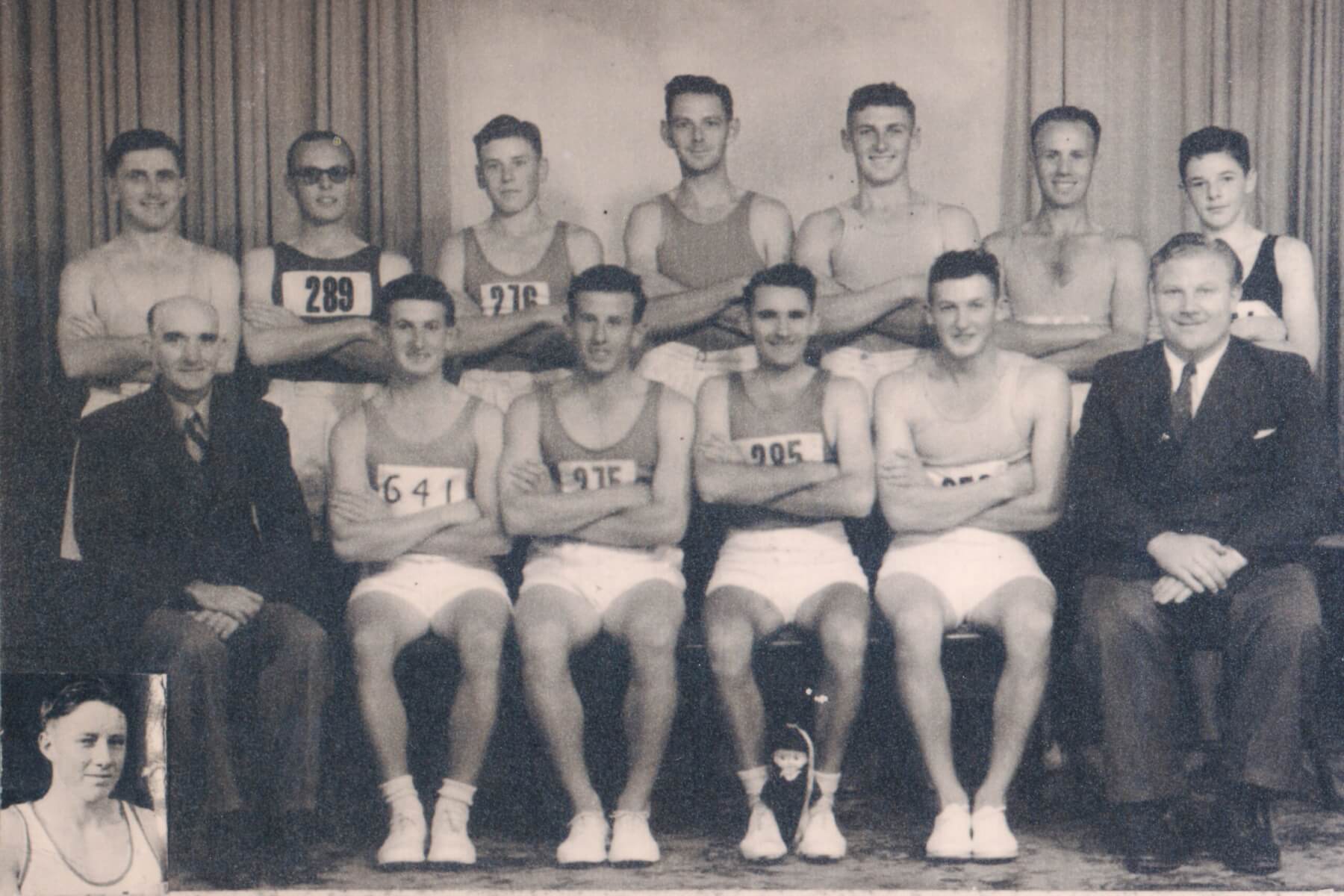
Cambridge Athletic and Harrier Club foundation members, back row, from left: Russell Haydon, George Cleland, Ted Hulse, Chas Moroney, Frank Tomsett, Des Griggs, Robert Kenny; front row: Arthur Spicer (coach), Des Chapman, Ray Hulse, Maurice Cranston, George Tomsett, Frank Coxhead. Inset: Lance Griggs.
An exhibition on the club is currently on display in the Cambridge Museum which includes an explanation on why it, and clubs like it around the world, are called ‘Harrier Clubs’.
It comes from a British sport called paper chasing which gained popularity in the 1860s and 1870s. In the event two ‘hares’ created a paper trail while the harrier hounds tried to catch them.
The sport developed into cross country and clubs around the world called themselves harriers.
A commemorative book has been published and Fisher has gone to great lengths to track down details of the club’s 21 life members, seven of whom are still alive and all but two of them will attend the dinner.
Over the years the club has held pack runs, road races, cross country events and held invitational runs with other Waikato harrier clubs.



